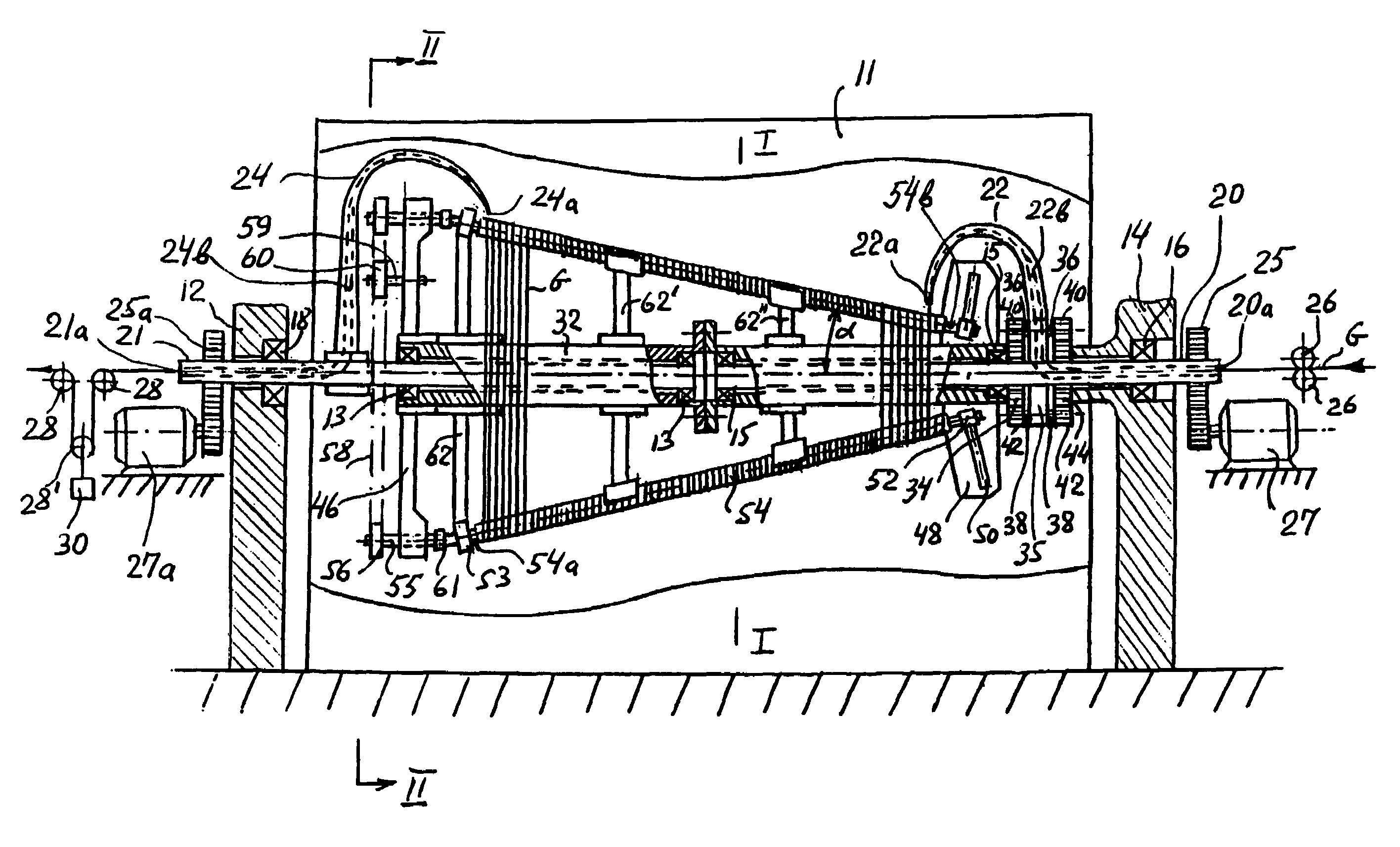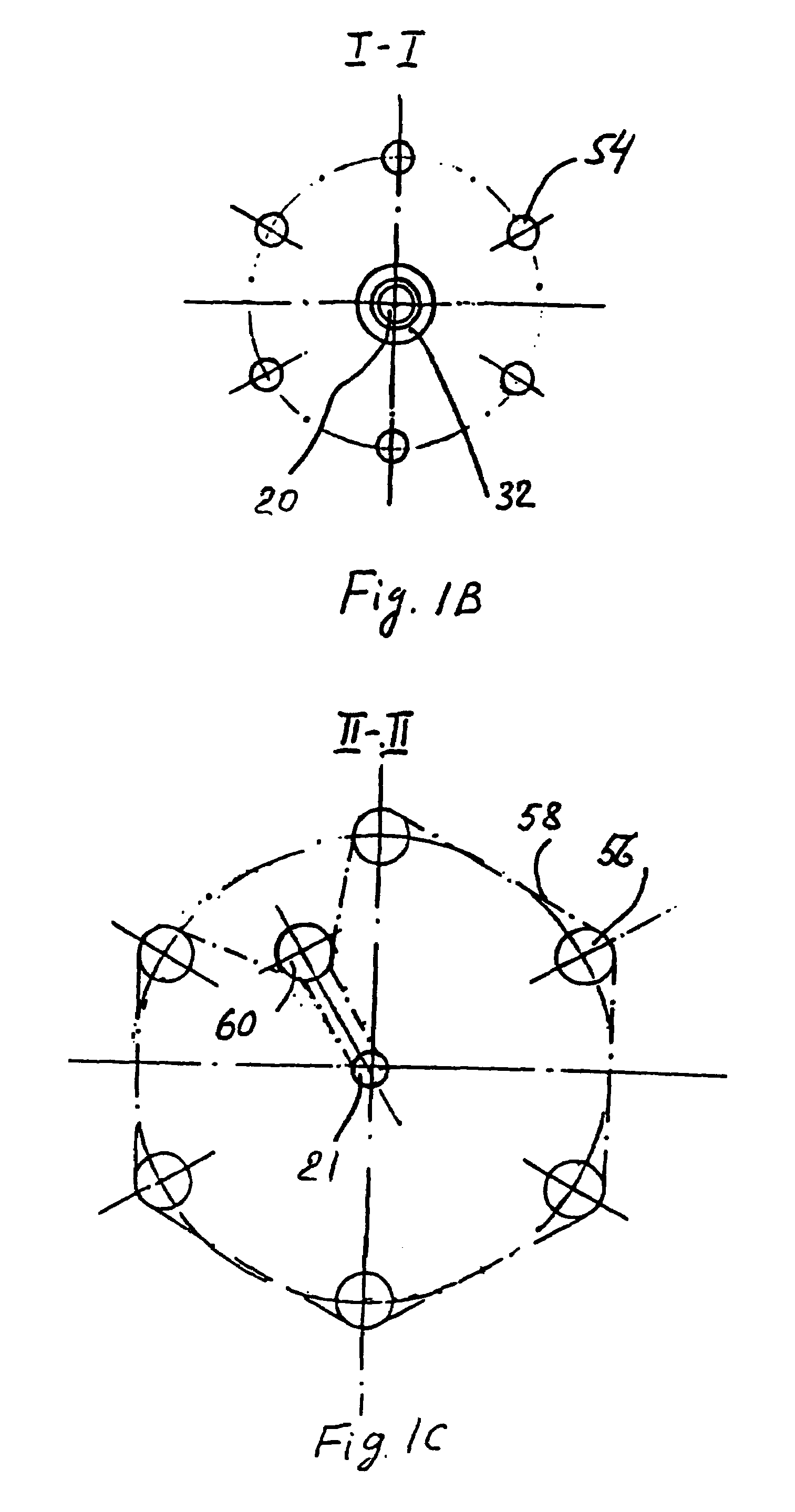Method and apparatus for low-speed, high-throughput fiber drawing using coiled fiber loops
a high-throughput, fiber-based technology, applied in the direction of paper, textiles, etc., can solve the problems of high waste volume, frequent fiber breakage and equipment stop, and fiber subject to a very abrupt acceleration and tension rise, and achieve high-performance fibers. high, high-speed drawing time t, low strain rate
- Summary
- Abstract
- Description
- Claims
- Application Information
AI Technical Summary
Benefits of technology
Problems solved by technology
Method used
Image
Examples
example 1
[0163]Table I gives the results of calculations for the case: L=5500 mm, Voutlet=Vtake-up=3000 m / min (the fiber is conveyed to the receiving package after the drawing stage), n=6, λ=5 to 1 (400%), and d, M and A are variable. The coiled fiber loops are not rotated about the central axis by the rotating rollers or spindles. Take-up speed of 3000 m / min is typical take-up speed for the commercial process for multifilaments and yarns.
example 2
[0164]Table II gives results of calculations for the case: L=2000 mm, Voutlet=Vtake-up==500 m / min (the fiber is conveyed to the receiving package after the drawing stage), n=6, λ=5 to 1 (400%), and d, M and A are variable. The coiled fiber loops are not rotated about the central axis by the rotating rollers or spindles. Take-up speed of 500 m / min is typical take-up speed for the commercial process for tape yarns and monofilaments.
(b) The Case of the Embodiment of FIG. 5A with the Coiled Serpentine Fiber Loops.
[0165]Equations (10)-(32) derived for the case of the coiled equilateral polygonal fiber loops (embodiments of FIGS. 1A-4A) are applicable for the case of the embodiment of FIG. 5A with the serpentine fiber loops where a number of the conveyer-drawing members n=2.
example 3
[0166]Table III gives the results of calculations for the case: L=5500 mm, Voutlet=Vtake-up==2000 m / min (the fiber is conveyed to the receiving package after the drawing stage), n=2, λ=5 to 1 (400%), and d, M and A are variable. Fiber points of the serpentine fiber loops are not moved by rotating rollers along the fiber axis. As discussed above, this embodiment of the invention having the serpentine fiber loops can draw multiple ends.
[0167]Thus, in the cases examined in Examples 1-3, fiber linear speed (Vfiber)max is low, i.e., 0.1-8 m / min, time of drawing T can reach tens of seconds, strain rate Vstrain is low, i.e., 6-70% / sec, and the ratio of Voutlet to (Vfiber)max is greater than 1 to 1, i.e., varying from the ratio 250 to 1 to the ratio 9000 to 1 (the fiber drawing apparatus can be constructed and arranged to provide the ratio, if necessary, lower than 250 to 1 and greater than 9000 to 1). In case of conventional commercial drawing process having the same λ=400% and (Vfiber)max...
PUM
| Property | Measurement | Unit |
|---|---|---|
| length | aaaaa | aaaaa |
| circumference | aaaaa | aaaaa |
| outlet speed | aaaaa | aaaaa |
Abstract
Description
Claims
Application Information
 Login to View More
Login to View More - R&D
- Intellectual Property
- Life Sciences
- Materials
- Tech Scout
- Unparalleled Data Quality
- Higher Quality Content
- 60% Fewer Hallucinations
Browse by: Latest US Patents, China's latest patents, Technical Efficacy Thesaurus, Application Domain, Technology Topic, Popular Technical Reports.
© 2025 PatSnap. All rights reserved.Legal|Privacy policy|Modern Slavery Act Transparency Statement|Sitemap|About US| Contact US: help@patsnap.com



